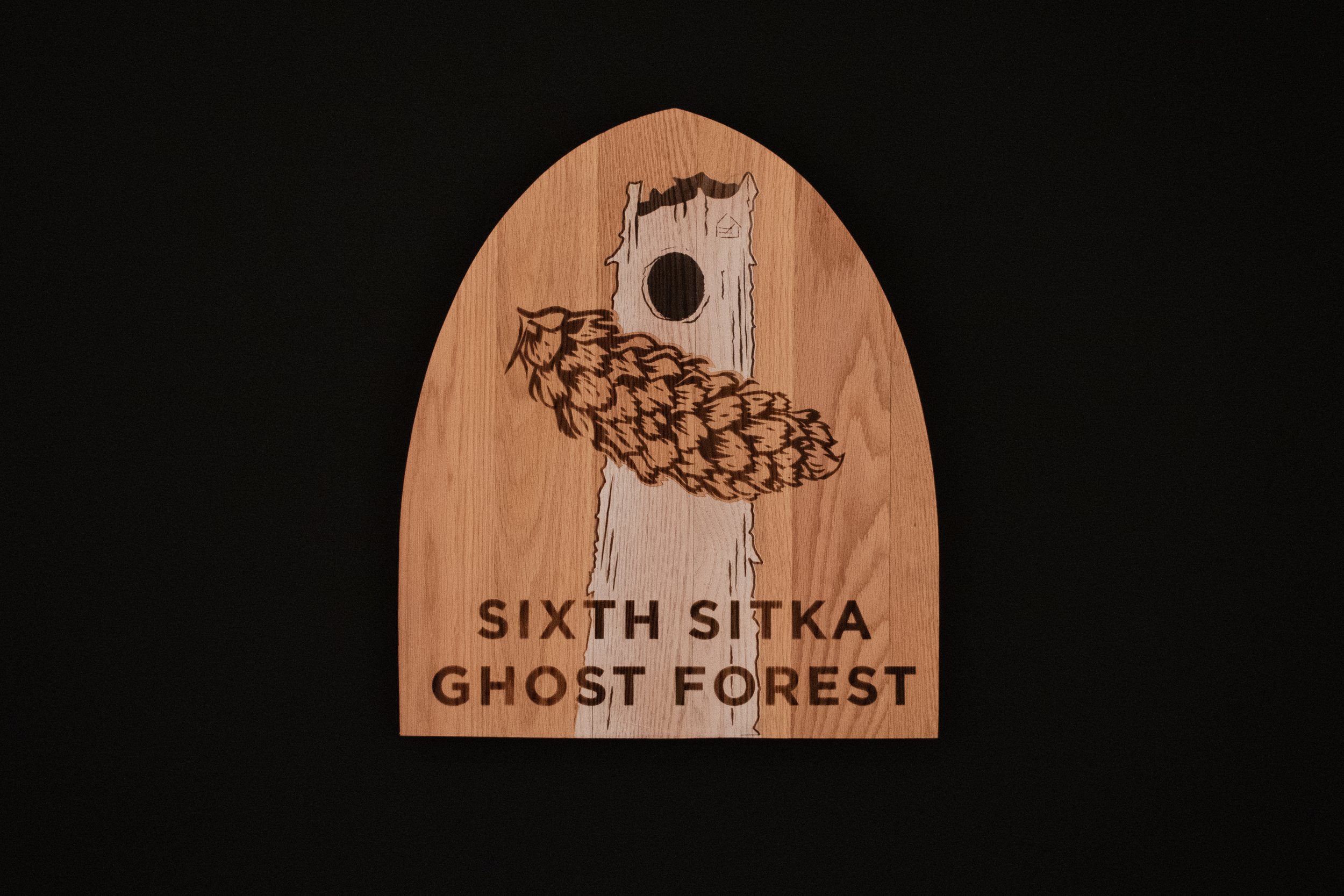PNW Tree ID
The PNW Tree ID project builds off the interpretive-sign tradition of identifying trees in situ as educational program for trail users. The series specifically focuses on native tree species found in the Pacific Northwest region of the United States.
The graphic design of the mixed-media signs (recycled oak flooring, india ink, acrylic paint, and lasers) are intended to tell botanical tales that are ancient, unfolding, complex, and even speculative in nature.
Current Collaborators: Vinnie Arnone, David Buckley Borden, Evan Kwiecien, Isaac Martinotti, Michael Paul Nelson, Madison Sanders, Fred Swanson, and Ian Vierck
This interdisciplinary collaborative project is funded by the Fuller Initiative for Productive Landscape at the University of Oregon, Oregon State University Foundation’s Andrews Forest Fund, and the sale of artwork David’s website.
Pinus strobus, eastern white pine, is native to the eastern US from the Southern Great Lakes Region up to Newfoundland. Its needles are found in fascicles of 5 and are shorter than its western cousin. The cones are long and pendulate. Known to invade old farm fields in the east, the eastern white pine is now invading the Pacific Northwest as an ornamental tree, planted for its unique cultivars.
Pinus sabiniana, gray foothills pine, is endemic to California and the Klamath Mountains ecoregion of Oregon. The gray foothills pine can be easily identifiable by its tremendously large cones and long needle. The infamously large cones of the gray foothills pine are specially adapted to the sloped and grassy environment it resides in. After 3-5 years of staying on the tree, the pinecone will detach and roll downhill (hikers beware).
Tsuga mertensiana, mountain hemlock, lives high on the crests of most mountain ranges West of the Rockies. The cones are the largest of the hemlock genus. Needles have stomata on both sides, and are uniquely spirally arranged. The elevated range of this species makes it convenient company for fire lookouts perched on our peaks.
Psuedotsuga menziesii, Douglas Fir has a large range west of the Rocky Mountains. Its needles are spirally arranged, with a slight twist at the base. Its cones have a unique 3 pointed bracted that extends beyond the scales. Douglas fir yields the most amount of timber in North America than any other tree, making it one of the most economically important trees in the world.
Pinus lambertiana, Sugar Pine, can be found throughout the cascade range. Its needles are found in fascicles of 5. The cones are the largest of all pines, with the largest recorded cone clocking in at 22 inches. The sweet, alluring resin combined with the notoriously large cones gives this pine the nickname, ‘siren of the forest’. Those who cannot avoid the enchantment of this charismatic pine may be found lying under its canopy.
Picea sitchensis, sitka spruce, occurs within a thin strip on the coast of Oregon into Alaska. Its needles are glaucus with two strips of stomata on the underside. The cones are soft, papery and pale brown. The sitka spruce was a central tenant of a nearly lost ecosystem, the tidal forest. Today, these tidal forests have been converted to farmland, logged, or diked. The remains of these forests remain to this day.
Pinus contorta, lodgepole or shore pine, is a hard pine located from the shore of the coast to the subalpine mountains. The needles are short and can be found in fascicles of two. Its cones are prickly and serotinous, needing fire to open and release seeds. The cone’s ability to stay closed for long periods of time makes it the preferred cone for a fantastic game of Whack-Baastic game of Whack-Bat.
Sequoiadendron giganteum, giant sequoia, is a giant tree with a small range occurring within only 75 groves. Its needles are triangular at cross section, and scale or awl-like. The cones are round, large, and characteristic of the Cypress family. The iconic tree is often used as a symbol of majestic nature and is even featured in the foreground of the United States’ National Park Service logo.








